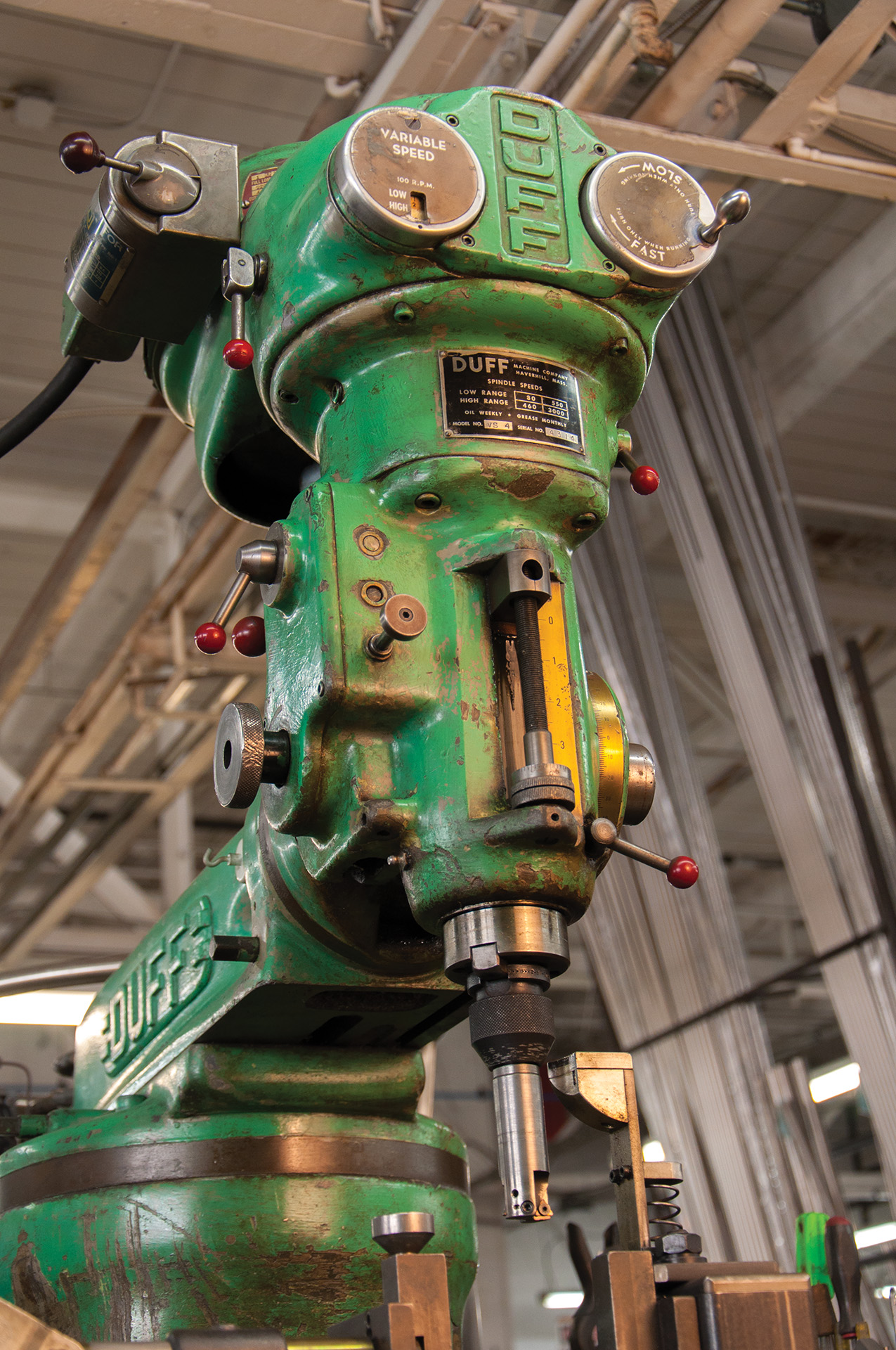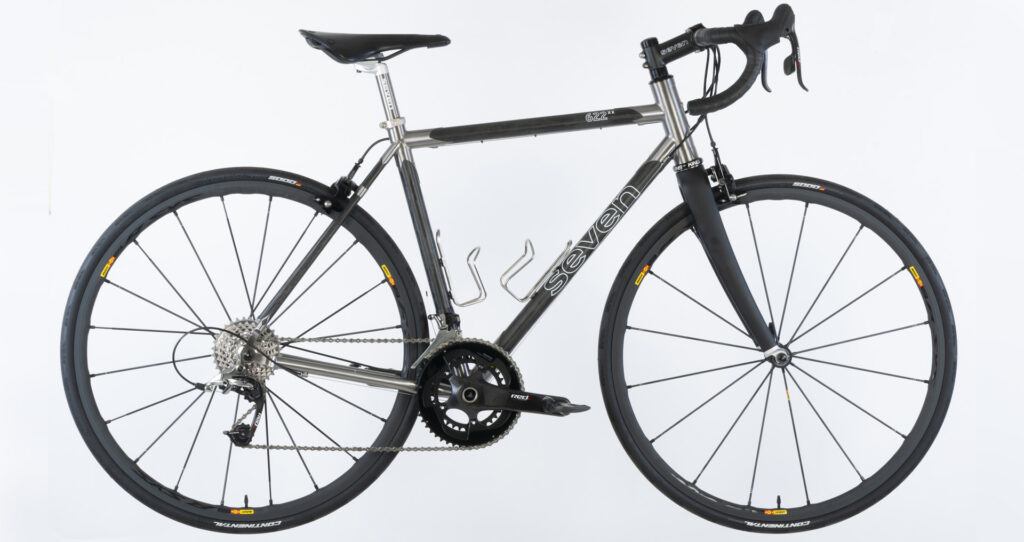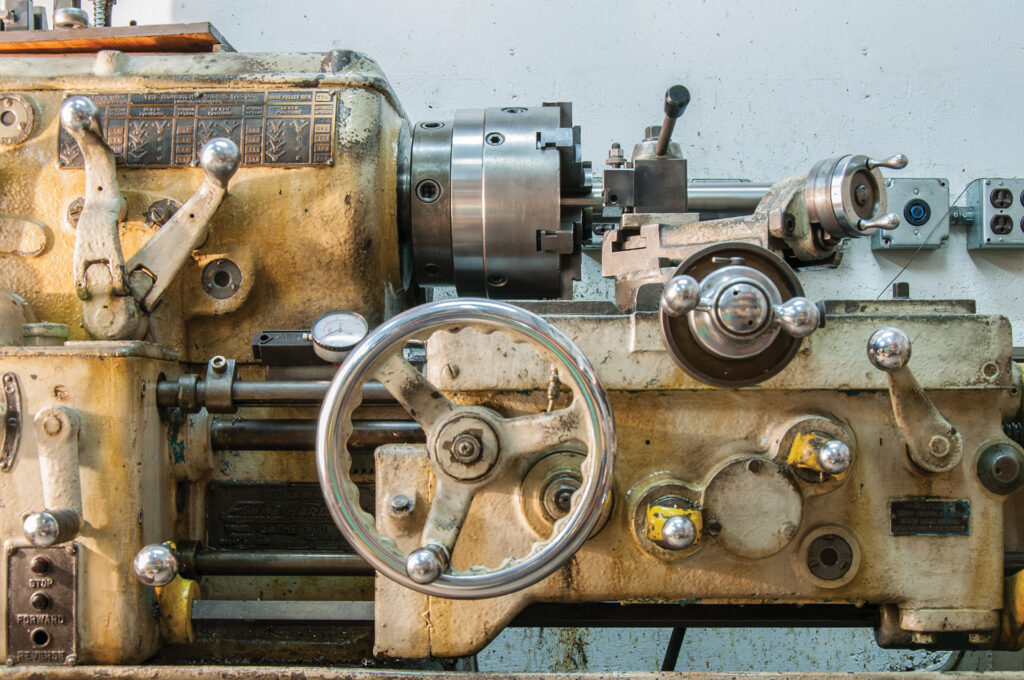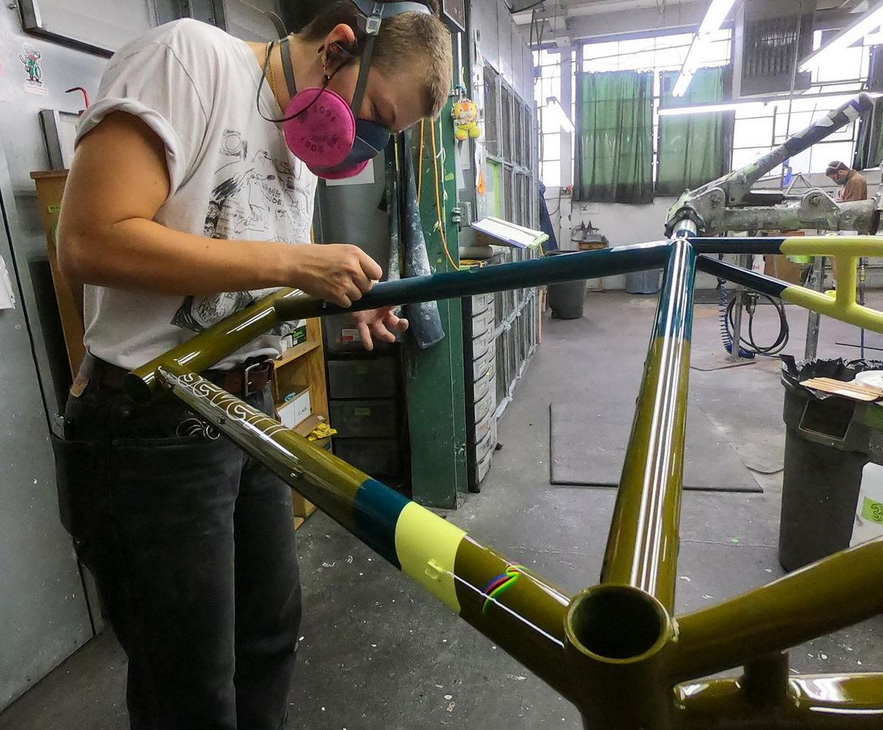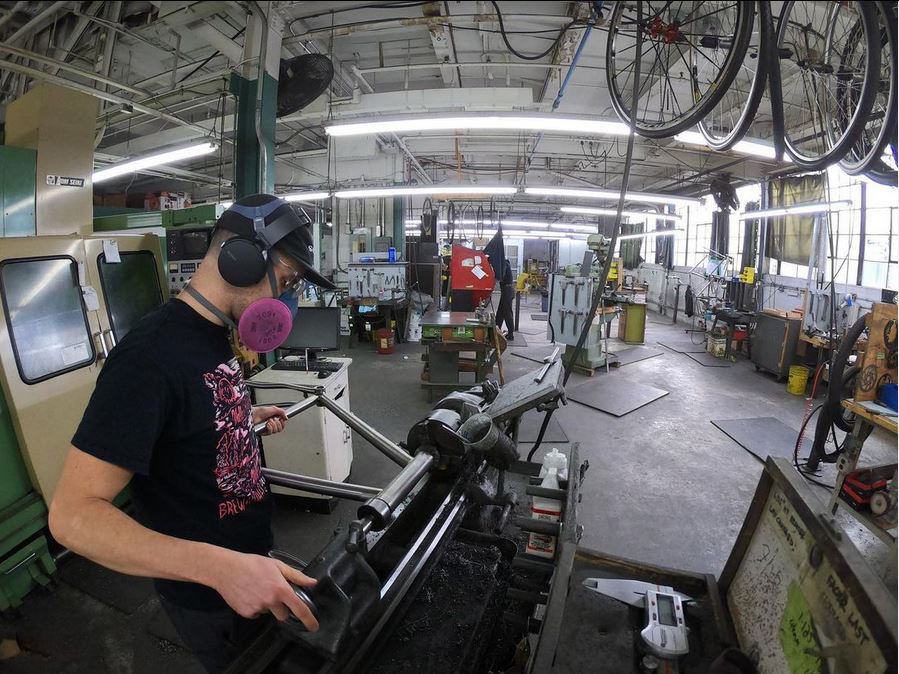Duff’s were made in Haverhill, MA, just up the road from us. They are smaller than most mills of that vintage, and many of them went to hobbyists half-a-century ago. We like them because they’re more easily moved than their larger cousins, and they take up less floor space. Their distinctive green paint also livens up the shop a little. Our favorite Duff bores our titanium stem tails to perfect roundness.
Category: Framebuilding
The 622 XX
We had been thinking about the 622 XX for 14 years before we built the first one. In 1998, it just didn’t seem possible. There wasn’t the breadth of carbon tubing we have today, and the design was maybe too far over the edge from what we were already doing at the time. We wondered if the market was ready.
We put away our sketches.
We came back to them in 2005. Carbon fiber had come a long way, and we were thinking about how we could incorporate the material of the moment into a great, custom bike. Instead of building the 622 XX then, we poured our energy into designing a custom carbon platform, a whole new way of building bikes, from the ground up, and we built those bikes for seven years before returning to our original design idea.
The key to the whole project is the lugs. Lug work has a long heritage. There was a time, when all bike builders were still working exclusively in steel, that the quality of a builder’s lugs was the measure of their skill. A lug had to be beautiful, but it also had to serve its purpose. Form had to follow function.
The titanium lugs in the 622 XX are as thin as they can be while maintaining durability and compliance. They take the edge off the frame’s carbon tubes, which on their own provide more than ample stiffness. We added some aesthetic flourishes, too. A tapered 7 at the head and seat tubes, geometric cut outs at the other junctions. When people first see the bike, these are the things they notice.
The carbon tubing in the bike comes from a partner in Utah and is filament-wound to our exclusive specification. Each layer of material has been chosen to produce very specific ride characteristics. Filament-wound carbon, as opposed to its roll-wrapped equivalent, provides a consistent, accurate quality.
The name for the bike comes from the Periodic Table. 6 is carbon. 22 is titanium. And, by merging them into one number, we are expressing exactly what we want the bike to be, a true union of the materials, a whole that is greater than the sum of its parts.
The 622 XX is either a carbon bike that doesn’t feel plasticky, or it’s a Ti bike that is lighter and stiffer than any that came before it. Or maybe it’s a new bike, a bike that makes use of the best materials, that borrows something from the heritage of bike building but leverages the technology of the moment to produce a ride that is at once light, stiff and comfortable.
Tools of the Trade Part Two: Monarch Lathe
On Framebuilding: Part Four – Paint
Painted frames get prepped, then hung on the rack just outside the odd looking, seemingly out of place, paint booth. Its silver walls look like nothing else in the building. A sign hangs above the door that reads “time machine.”
Continue reading “On Framebuilding: Part Four – Paint”
On Framebuilding: Part Three – Final Machining and Finishing
Final machining completes the frame, making it ready to assemble into a fully functioning bike. The head tube, ever so slightly distorted from the heat of the welding torch, is faced and reamed on a vintage, Massachusetts-made lathe.
The bottom bracket, still just a thick walled tube at this point, is threaded and machined in the CNC, the largest machine in the building. Seat tube notches get cut, and carbon fiber tubes are fitted into the frame if we are building a titanium/carbon model.
Continue reading “On Framebuilding: Part Three – Final Machining and Finishing”

